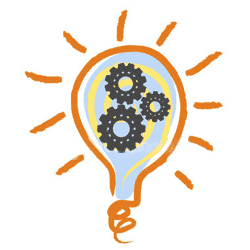 You can get six times the reductions in carbon dioxide by investing in energy saving rather than nuclear power (Niels Meyer). So why not start saving? Here’s a few helpful energy saving techniques to use in our homes and businesses, from the South African Department of Mineral and Energy and The Energy Book for Urban Development in South Africa. You can get six times the reductions in carbon dioxide by investing in energy saving rather than nuclear power (Niels Meyer). So why not start saving? Here’s a few helpful energy saving techniques to use in our homes and businesses, from the South African Department of Mineral and Energy and The Energy Book for Urban Development in South Africa.
In the Home
- Reduce the temperature of your geyser to around 55 degrees.
- Whilst cooking the size of the pot should match the size of the stove plate - this can save you up to 25% on the electricity you use while cooking.
- Close the door every time you take things out of the fridge and also check that it seals properly.
- Try to boil only the water you need instead of boiling a full pot or kettle every time.
- Close windows and doors when the heater is on.
- Replace electric stoves with gas stoves.
- Insulate your geyser by wrapping newspapers, old blankets or other insulating materials around it and the hot water pipes.
- Switch off lights, fans, computers and other energy consuming appliances when you leave the room.
- Turn off all stand-by modes every time you leave the house and before going to bed.
- Use energy saving light bulbs. They last much longer and use less electricity.
- Use renewable energy where possible, such as installing a solar water heater.
At Work
- Install efficient lighting such as CFLs (compact fluorescent lights). They cost more than normal incandescent 'bulbs' (R30-R50 as opposed to R3.60), but last about 10 times longer and use one quarter of the electricity
- Switch off PCs and lights when leaving the office.
- Implement paper reducing strategies such as recycle and re-using, or double sided copies.
- If appropriate, use laptop computers - they consume 90% less energy than standard desktop computers.
- If appropriate, use ink-jet printers - they consume 90% less energy than laser printers.
- Install ceiling and wall insulation.
Building or Renovating a House?
In increased energy efficiency can be attained by making environment conscious decisions when building or renovating homes and workplaces.
- design houses that are compatible with the local climate of the region (for example in Cape Town’s Mediterranean climate, building with heavyweight cavity walls and dense compact layout are suited to the wet winters and windy summers
- plan a house that takes best advantage of the sun
- build with energy efficient materials
- insulate ceilings
- install solar water heaters
- create good ventilation to avoid dampness
- rainwater can be collect off the roof and channeled to the garden
More Useful Guides
For more information on other energy saving techniques in different sectors (residential, commercial, industrial, transport and agriculture) visit the Department of Minerals and Energy or the following guides for consumers, architects or builders, and the local government.
|